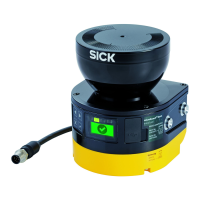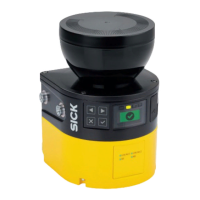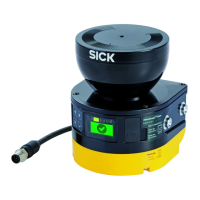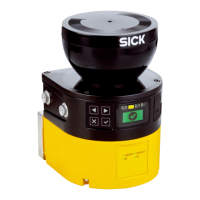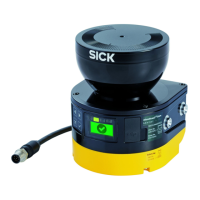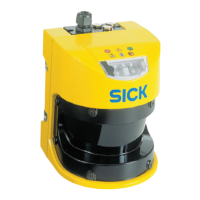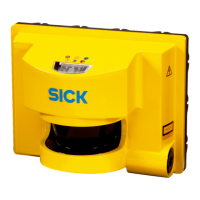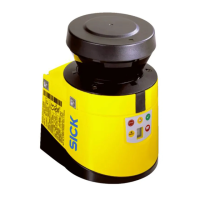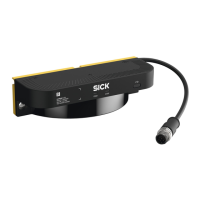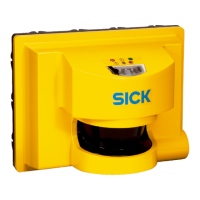•
Z
D
= 0mm (dis
tance between test object and front of rack = 100mm)
•
L
SLS
= 1200mm
Calculation of the protective field length
•
S
L
= 3850mm + 100mm + 350mm + 0mm + 0mm + 0mm + 1200mm =
5500mm
Calculation of the protective field width
•
Width of the narrow aisle – (2 × distance between protective field and front of the
rack)
•
2400mm – (2 × 100mm) = 2200mm
Further topics
•
"T
esting plan", page 69
•
"Mobile hazardous area protection", page 47
4.3.10.2 Collision protection in narrow aisles
Overview
R
eliable collision protection prevents collisions of oncoming industrial trucks in narrow
aisles.
Important information
DANGER
H
azard due to lack of effectiveness of the protective device
Persons and parts of the body to be protected may not be recognized in case of
non-observance.
The collision protection field is not suitable for detecting people.
►
Do not use the collision protection field to detect persons.
►
If persons are to be detected, also configure the protective field.
►
For protective fields, take into account the supplement for reflection-related meas‐
urement error Z
R
if a reference target is nearby (distance of retro-reflector from
protective field ≤ 6m).
Prerequisites
•
C
ollision protection field are used exclusively in narrow aisles.
•
Industrial trucks only approach head-on.
•
Reference targets are correctly mounted on all industrial trucks in both directions
of travel.
•
Safety laser scanners with collision protection field are correctly mounted on all
industrial trucks in both directions of travel.
Collision protection
T
he safety laser scanner is mounted with a horizontal scanning plane on industrial
trucks that travel in narrow aisles. With collision protection, the safety laser scanner
protects the hazardous area that is created when 2 industrial trucks move towards each
other. The safety laser scanner detects reference targets attached to other industrial
trucks. The collision protection field is parallel to the approach direction.
This type of protection is suitable for narrow aisle applications where a collision of
industrial trucks may result in a hazard to persons.
Further topics
•
"T
esting plan", page 69
PROJECT PLANNING 4
8025220/1L9Q/2023-08-14 | SICK O P E R A T I N G I N S T R U C T I O N S | microScan3 – EtherCAT®
57
Subject to change without notice
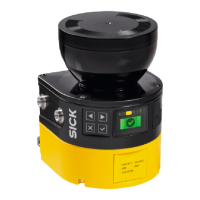
